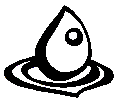

science
Please mouseover difficult words to see what they mean
News
Northwestern University: Embargoed for release: 21-Nov-2007 12:00 Eastern US Time
Molecular foreman in the brain
Scientists have found a master molecule in the brain. It runs the show when connections between brain cells are being remodelled - which is how we learn new information and skills.
When the mechanism the scientists have found goes wrong the result may be mental retardation, schizophrenia or drug addiction. So this new discovery could improve our understanding of these disorders of the brain.
Peter Penzes and his colleagues published their findings in the November 21, 2007, issue of the journal Neuron, published by Cell Press.
Brain cells are known as neurons by scientists. In these new experiments, the researchers tried to understand what controls the growth of dendritic spines on neurons. These are the receiving stations for signals sent from nearby brain cells.
When a brain is learning, signalling between these spines increases. This lays down memories in the brain. Spines can also play a part in brain disorders. Badly formed dendritic spines have been found in autistic spectrum disorders, schizophrenia, ADHD and drug addiction.
Penzes and his colleagues were trying to discover if a molecule called kalirin-7 plays a role in spine growth in mature neurons during long-term potentiation (LTP).
Their theory was that kalirin-7 regulates the growth of the spines. Evidence for this is its high concentration in the spines of mature neurons. Also kalirin-7 was known to play a role in the remodelling of the overall structure of the cell - the cytoskeleton.
The researchers carried out their experiments with neurons in culture. These showed that activation of neurons during long-term potentiation does indeed trigger kalirin-7 to turn on the machinery for remodelling the spines. This makes them grow larger.
They also found that kalirin-7 regulates the other main process that strengthens signalling between neurons. It controls the number of receptors. These are found all over the surface of dendritic spines. They act as receiving stations for neurotransmitters.
The strength of signalling between neurons depends on the number of receptors they have on them.
These new findings, say Perez and his colleagues, strongly suggest that kalirin-7 plays “an important role in learning and memory.”
They also point out that altered spine structures “have been associated with mental retardation, neuropsychiatric disorders, and drug addiction.
“Therefore, our results may suggest potential strategies for treatments of these neurodevelopmental and psychiatric diseases,” they write.
More help with words
cell
communications
dendrite
disorders
hypothesis
mental
nervous system
tentative
What's it all about?
More learning and teaching resources
University of Washington Television has an online video of a teacher/scientist introducing youngsters to the workings of the brain. Show the class the section on neurons and how they communicate with each other that starts 8 minutes 15 seconds in and lasts just over 4 minutes.
Then invite students, working in groups, to use what they have just seen and heard, and what they have learned from the links to this article, to sketch the three brain cells in the video demonstration.
They should label the different parts of each cell and draw arrows to show the direction of a signal - along the different parts of a cell and from one cell to another.
For groups that need a hand to get started, you can tell them that the following parts should be shown in their diagram:
And the arrows for the signals should be labelled either 'electrical signal' or 'chemical signal'.
Once the diagrams have been sketched, groups should give a short explanation or demonstration to the class.
